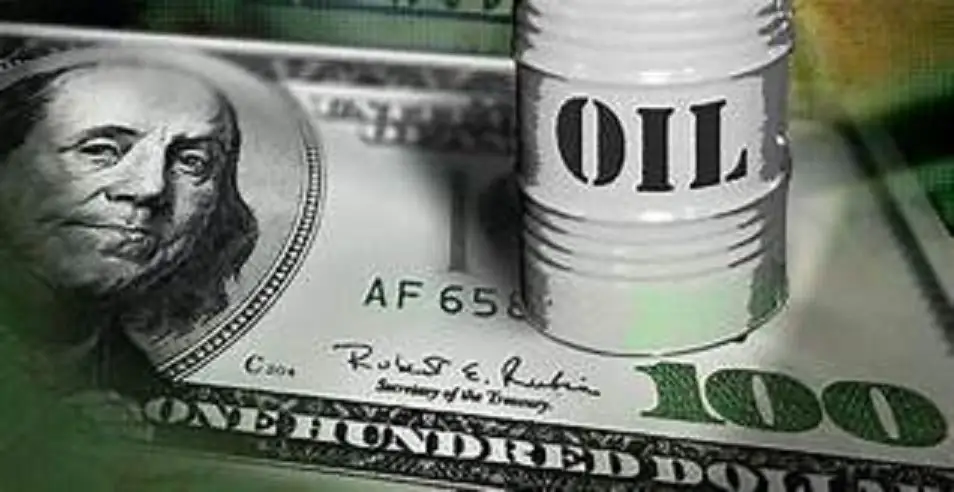2025 Author: Howard Calhoun | [email protected]. Last modified: 2025-01-24 13:10:43
In 1939-1945. The US State Department and the Council on Foreign Relations, after World War II, developed an economic plan to conquer the Western Hemisphere, including the former British Empire, and much of the commercial and industrial heartland of Europe. The goal was to maintain undisputed US power in the region with military and economic superiority, while limiting the influence of states capable of interfering in such global projects.

History of world currency: gold standard
The result of this plan was the creation of a number of supranational political and economic institutions, and the signing of a number of international treaties, including the Bretton Woods agreement. The dollar became the world's currency, replacing the previously used gold standard with a monetary one. America has an export item numberone: to conduct international trade, all countries buy dollars. The Soviet Union did not join the agreement.
Collapse of Bretton Woods
In 1970, it became apparent that the experiment to control the global monetary system through the Bretton Woods pseudo-gold standard had failed. In August 1971, Nixon announced America's withdrawal from the 1944 Bretton Woods Agreement.
To allow the possibility of an economic downturn - this the US government, Wall Street and the Fed could not afford. The United States used all its economic and military power to take over the world's gold standard - and failed. Something urgently needed to be done so that the demand for the dollar did not fall.
Petrodollar system
Three years later, the US signed an agreement with Saudi Arabia under which the Saudis pledged to sell oil only for dollars and reinvest profits in US Treasury securities. Countries importing oil from Saudi Arabia must convert their national currency into US dollars to complete the transaction. In exchange for maintaining the global demand for its currency, America promised to supply arms and protect oil fields from neighboring countries, including Israel.
Since 1975, all OPEC countries have agreed to sell oil on the same terms. This was the initial stage in the history of the petrodollar.

Definition of petrodollars
A country's petrodollars are US dollars earned by selling oil. Amounts assessed to countries-exporters of raw materials, depend on the price of its sale and the volume of sales abroad. Global oil supply on the one hand, and global demand on the other, sooner or later determine the real market price for oil, regardless of any managed pricing system.
The price set by the OPEC countries can only be maintained as long as there is sufficient demand to absorb the amount of oil supplied to the world market. If it exceeds supply, oil will be sold at a higher price. The opposite is true when there is a glut in the market. This is reflected in the price after a certain amount of time, regardless of OPEC's dictated price.

Petrodollars and their dependence on exchange rates
Petrodollar profits are dollars earned from the sale of oil that exceeds the country's domestic development needs. Surplus petrodollars accumulated in the process of converting subsoil use into domestic income and fixed assets relate to oil production that exceeds such needs, but turns into a money supply.
Petrodollars are US dollar-denominated oil revenues. In reality, they depend on the level of inflation in the United States and the exchange rate of the dollar into the national currency of the oil exporter. Whenever the US dollar changes, the assets of oil-exporting countries change by the same amount. The relationship between the US dollar and the petrodollar is a linear direct relationship.

Reinvestment of profits or loss of sovereignty
Countries that place petrodollars in the United States are politically hostages of capital. In the event of a conflict, the US government has the ability to limit the use of these assets, up to their complete confiscation, in order to achieve its political, economic or other goals. This is a direct violation of the sacred principles of capitalism and economic freedom that America loves to proclaim. However, the US government used such weapons twice in the 1980s against Iranian and Libyan assets.
Governments by placing petrodollars in the US risk losing some of their economic and political independence. The more assets placed in the United States by a particular oil-exporting country, the less self-reliant that nation becomes.

Petrodollar and the collapse of the USSR
The Soviet Union began supplying oil to the countries of the socialist bloc in October 1964, and since then the export of hydrocarbons from the country has grown steadily. After the Arab oil embargo of 1973-1974 from the countries of Western Europe for oil supplies, petrodollars began to flow into the USSR. This was contrary to the policy of the CPSU, which preferred to trade with other countries in rubles, but the economic situation in the country forced them to agree to the terms of the buyers.
The dependence of the economy of the Soviet Union on oil prices played an important role in the collapse of the USSR. The collapse of commodity prices in the absence of other sufficient sourcesfinancing and dependence on exports of consumer goods led the country to an economic collapse.
After the collapse of the USSR, the baton was taken over by the CIS countries: Russia, Kazakhstan, Azerbaijan. In the Russian economy, petrodollars - income from the sale of hydrocarbons - form a significant part of the country's budget.

An oil-exporting country can only run a petrodollar surplus if its absorption capacity is below oil revenues for any given period of time.
Petrodollar surplus does not reflect the real we alth of the country. If you keep dollars, then their purchasing power is gradually eroded by inflation and unfavorable exchange rates. The US is the "master" of both variables. Therefore, the purchasing power of the petrodollar assets of commodity-exporting countries is determined by a complex set of variables, the trends and values of which are functions of factors beyond the control of these countries.
Efficient distribution of petrodollars for domestic investment can increase the production potential of the exporting country of "black gold" and work for the country's economy. But dependence on imported consumer goods, including high-end and rare collectibles, encourages the export of limited natural resources that could be used for domestic development.
Recommended:
BKI is The concept, definition, services provided, verification, generation and processing of your credit history

BKI is a commercial organization that collects and processes data on borrowers. Information from the company helps lenders know if there are any risks when making a loan to an individual. Based on the information received about the client, banks make a decision to approve or refuse a consumer loan
Long-term investments are The concept, types, characteristics and possible risks of long-term investments

Is it profitable to invest money for the long term? Are there any risks for investors? What are the types of long-term investments and how to choose the right source of future income? What steps should an investor take in order to invest money for the long term safely and profitably?
What is a floor: definition of the term, norms and requirements

What is a floor? Synonyms, important characteristics. Floor types. What is the number of floors in a building? The current current norms are SNiPs. What is a basement? These are advantages, design features, purpose. What is a mezzanine floor?
Mortgage: minimum term, conditions for obtaining. Minimum term of a military mortgage

People who want to solve financial problems often decide to apply for a loan. Or, if you need housing, take a mortgage. And everyone wants to get even with debts as soon as possible. Therefore, all people, before deciding to take such a responsible step, carefully calculate the amounts, terms, interest - just to get the maximum benefit. Well, the topic is interesting, therefore it is worth considering it in all its details
Fair competition: definition of the term, types and features, examples

Fair competition is one of the key engines of the economy, which can work both globally and locally. It is thanks to this phenomenon that the country's economic growth occurs, as well as a constant improvement in the quality of products and services. In addition, competition helps to develop the latest forms of business and produce fundamentally new products with simplified functions. In our article, we will consider examples of fair competition and its types

